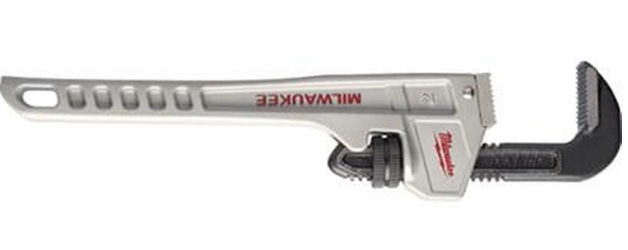What Tools Are Essential for Working on a Flushometer Body?
Dec 17th 2024
Improvisation and problem solving are two major human virtues. Man is the tool-user, after all, and the ability to create tools that work more efficiently and effectively is one of the secrets to our success as a species.
But that brings up a separate point: reinventing the wheel. When we’ve already come up with ideal tools for a given application, there’s no point in using something else that just won’t work as well. The point is this - use the right tools for the job, whatever it is.
Not only will using the proper tools, regardless of the situation, increase productivity and require less expenditure of effort. The right tools will also decrease the chance of injuries or of damaging the equipment you’re working on. In some situations, using the wrong tools can actually irreparably damage the equipment being serviced.
Well, it’s not rocket science, but there are unique tools for working on flushometer bodies, and they’re designed in a very specific way for a reason. Not using the right tools can make your job harder and potentially damage plumbing fixtures like a flushometer body.
While there are plenty of generic tools that can be used in a pinch, we recommend preparing your toolbox with some of the following tools that can be used to effectively and safely service flushometers.
Necessary Tools:
In the name of being prepared for whatever the job throws at you, it’s beneficial to carry at minimum the following tools, specifically for the purpose of servicing flushometer bodies.
●Cover and nut tool
All flushometers have covers and nuts that secure various components. Some manufacturers, like Sloan, have relatively standardized cover nuts. A cover and nut tool makes it much easier and more efficient to remove the covers to access the internals through the top.
Can you use another wrench? Sure, if it’s the right size, but a dedicated cover and nut tool will save you time and effort. And remember - never use a wrench that’s the wrong size and never use an adjustable wrench if the jaws are not set properly. You can over-torque the cover nut, rounding off the corners, which will damage it and make it much more difficult to remove.
●Spud wrench
A spud wrench is basically an adjustable wrench with an adjustable box wrench on one end and a spike or taper on the other. These wrenches can be used to adjust nuts, bolts and other square fittings in plumbing applications; some toilets also contain spud nuts.
Why a spud wrench and not some other kind of adjustable wrench? Well, a spud wrench is more versatile; the other end can be used for gauging distances or even for prying or manipulating small holes (depending on how small it is).
●Valve wrench (non-marking)
A non-marking adjustable valve wrench is also a really big asset for most commercial plumbers, especially when the job requires working on a flushometer body. Most valve wrenches feature an offset design that makes it much easier to work in tight spaces or around other confines, and at weird angles. Many valve wrenches can be used for adjusting valves, nuts, faucets, fittings, and even tubular connections.
While you’re at it, make sure your collection contains a non-marking valve wrench. This will make it possible to adjust chrome-plated fittings without damaging the finish, which is a cosmetic benefit in most public commercial settings.

●Tailpiece removal tool
Many flushometers, like Sloan models, contain tailpieces that are very difficult to remove with an adjustable wrench. This is precisely the reason that there are specific tailpiece removal tools that you can purchase for the job.
They engage the tailpiece internally and are much easier to use than adjustable wrenches. Most importantly, since they work from the inside, they help to eliminate the risk of damaging the chrome finish on the outside of the flushometer body.
●Manufacturer-specific wrenches (like a Sloan Super Wrench)
There are also some specific wrenches on the market that are sized to fit specific nuts on certain manufacturers’ flushometer bodies. For example, the Sloan Super Wrench is designed to be a perfect match for all of the exposed nuts on any Sloan flushometer. This specific wrench is very helpful and also compatible with Zurn and Toto nuts. They’re clearly marked with corresponding part numbers, too.
●Strap wrench
Just as a failsafe, every commercial plumber should carry a strap wrench (or better, several) if only to be prepared.
Is a strap wrench specific to a given application? Certainly not; they can be used for everything from getting a grip on a jar lid to a wooden table leg. But in plumbing, a lot of fixtures are smooth and round, making it very difficult to get a good grip. Strap wrenches are perfect for that, especially if you need to get a secure grip on a pipe or a smooth, round flushometer body. It’s a very useful tool to have in reserve and it has tons of applications.
What Causes Flushometers to Fail?
There are many reasons that a flushometer could fail, or experience other issues like leaking or continuously running. Some of these problems can be caused by:
●Abuse, such as by users kicking the flushometer handle.
●Prolonged use and natural wear.
●An accumulation of debris under the diaphragm (on select models).
●An obstruction of the bypass orifice.
●Insufficient water pressure (not a flushometer problem, but affects them nonetheless).
●And more.
Age, use, corrosion, and dirty water are some of the most common culprits behind flushometer failure or malfunction. The important thing is to be prepared with the proper tools to make repairs as needed.
Need to Replace the Whole Flushometer Body?
Here at Quality Plumbing Supply, we sell a wide range of commercial plumbing tools, such as wrenches, socket sets, drain cleaning tools and power tools, in addition to commercial plumbing parts for repair (including flushometer bodies) and replacement. Take a look through our collection and let us know if you need help finding anything. You can reach us by email at Admin@QualityPlumbingSupply.com or by phone at 1-833-251-4591.

